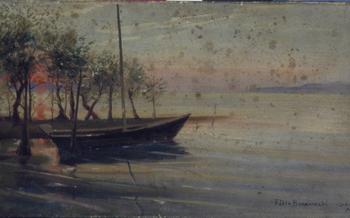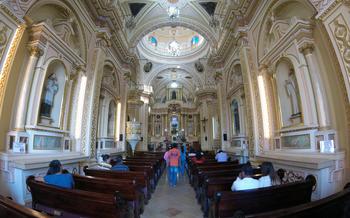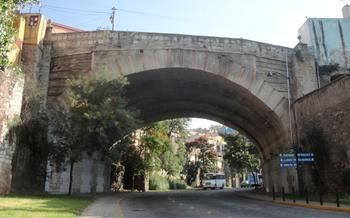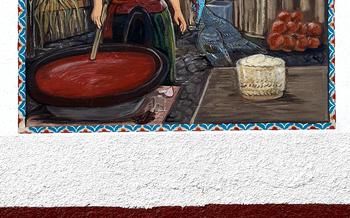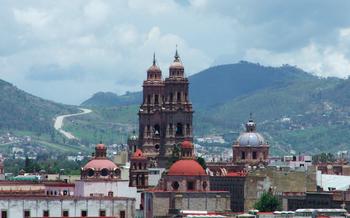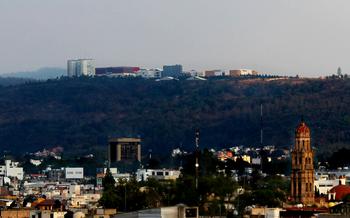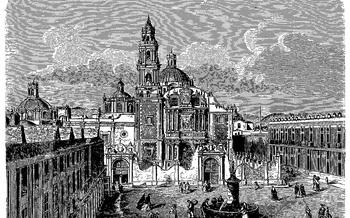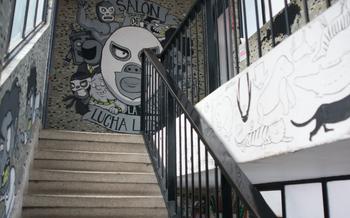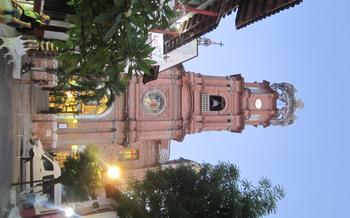
Lago de Zumpango en Zacapu
- Lago de Zumpango en Zacapu: A Hidden Gem in Mexico
- Climate and Weather
- Natural Beauty and Biodiversity
- Activities for Nature Lovers
- Local Cuisine and Dining
- Festivals and Events
- Accommodation and Hotels
- Tips for Budget Travelers
- Getting There and Transportation
- Safety and Precautions
- Budget and Costs
- Packing Tips for the Trip
- Solo Travel Tips
- Language and Communication
- Responsible and Sustainable Tourism
- Photography Tips
- Insider Tip: Hidden Gem
Lago de Zumpango en Zacapu: A Hidden Gem in Mexico
Climate and Weather
Lago de Zumpango en Zacapu boasts a pleasant climate year-round, making it an ideal destination for travelers seeking a warm and sunny escape. The average temperature hovers around 20 degrees Celsius (68 degrees Fahrenheit), with minimal fluctuations throughout the year. The dry season, from November to April, brings clear skies and mild temperatures, perfect for outdoor activities and lake exploration. The rainy season, from May to October, witnesses occasional showers that add to the lake's charm and provide respite from the heat.
Natural Beauty and Biodiversity
Lago de Zumpango en Zacapu is a haven for nature enthusiasts, offering a diverse range of flora and fauna. The lake's crystal-clear waters teem with a variety of fish species, while the surrounding mountains are home to a rich tapestry of wildlife. Visitors can spot migratory birds, including ducks, geese, and herons, as well as an array of mammals, such as deer, rabbits, and squirrels. The lake's unique ecosystem also supports a variety of plant life, including reeds, water lilies, and cattails, adding to its picturesque beauty.
Activities for Nature Lovers
The Lago de Zumpango en Zacapu is a paradise for nature lovers, offering a wide range of outdoor activities to enjoy. Birdwatching enthusiasts will be thrilled by the diverse array of species that call the lake and its surroundings home, including migratory birds, waterfowl, and songbirds. Wildlife spotting is another popular activity, with visitors often catching sight of mammals such as coyotes, foxes, and rabbits, as well as reptiles and amphibians.
For those who enjoy exploring on foot, the area around the lake offers plenty of opportunities for hiking and trekking. Several trails wind through the surrounding mountains, providing breathtaking views of the lake and the countryside. Camping and picnicking are also popular ways to enjoy the natural beauty of the area, with designated campsites and picnic areas available.
For a more active experience, visitors can fish in the lake, which is stocked with a variety of species. Boating is another great way to explore the lake, with rowboats, kayaks, and canoes available for rent.
Local Cuisine and Dining
Zacapu and Zumpango offer a delightful culinary experience, showcasing the flavors and traditions of Mexican cuisine. Begin your gastronomic journey with the iconic pozole, a hearty soup made with hominy, meat, and a flavorful broth. Indulge in enchiladas zacapenses, a local specialty consisting of corn tortillas stuffed with cheese and topped with a spicy red sauce. For a taste of the region's street food, try tacos de carnitas, succulent pork tacos served with fresh salsa and guacamole.
Must-try street food in Zacapu:
- Elotes asados: Grilled corn on the cob, often topped with butter, chili powder, and lime.
- Tostadas: Crispy corn tortillas topped with various ingredients, such as beans, meat, seafood, and vegetables.
- Tamales: Steamed corn masa dumplings filled with savory fillings like meat, cheese, or vegetables.
Popular restaurants and cafes in Zacapu:
- El Patio de mi Casa: A charming restaurant serving traditional Mexican dishes in a cozy courtyard setting.
- La Casa de las Sirenas: A popular spot for seafood lovers, offering fresh catches prepared with a variety of sauces and flavors.
- Cafe del Lago: A lakeside cafe with a relaxed ambiance, serving coffee, pastries, and light meals with stunning views of the lake.
Cooking classes and workshops:
- Cooking classes: Learn to prepare authentic Mexican dishes in a hands-on cooking class, using fresh local ingredients and traditional techniques.
- Tortilla-making workshops: Discover the art of making fresh corn tortillas from scratch, a staple in Mexican cuisine.
Festivals and Events
Zacapu and Zumpango are alive with vibrant festivals and events throughout the year, offering a glimpse into the rich cultural heritage of the region. The annual Feria de Zacapu, held in March, is a grand celebration that showcases the town's agricultural and livestock traditions. Visitors can expect lively parades, traditional music and dance performances, and a bustling market filled with local products.
For a unique religious experience, don't miss the Feria del Santo Niño de Zumpango, held in January. This festival honors the patron saint of the town, with colorful processions, traditional dances, and a pilgrimage to the Templo de San Juan Bautista.
If you're a music enthusiast, be sure to catch the Festival Internacional de Música de Morelia, held annually in November. This prestigious event features world-renowned musicians and orchestras performing in various venues across the city.
Zacapu and Zumpango also host several cultural and artistic festivals throughout the year, celebrating everything from traditional crafts to contemporary art. Whether you're interested in exploring the region's history, immersing yourself in its vibrant religious traditions, or simply enjoying the lively atmosphere, there's always a festival or event to match your interests.
Accommodation and Hotels
Zacapu and the surrounding areas offer a range of accommodation options to suit different budgets and preferences. In Zacapu, you'll find a selection of hotels and guesthouses, providing comfortable stays with basic amenities. For those seeking a more immersive experience, unique accommodations near the lake, such as charming cabins or eco-friendly lodges, offer a chance to connect with nature.
Budget-conscious travelers can find affordable options by exploring hostels, guesthouses, or Airbnb rentals. Booking in advance, especially during peak season, is recommended to secure the best deals. For a truly unforgettable experience, consider staying at a traditional hacienda or a colonial-style hotel, offering a glimpse into the region's rich history.
Tips for Budget Travelers
Take advantage of budget-friendly accommodation options such as hostels, guesthouses, or Airbnb rentals. Cook your own meals using local ingredients from the market to save on dining expenses. Opt for public transportation or shared taxis to explore the region instead of renting a car. Take advantage of free activities such as hiking, swimming, and birdwatching in the surrounding natural areas. Look for discounts and promotions offered by local tour operators or attractions.
Getting There and Transportation
Reaching Zacapu is relatively easy from major cities in Mexico. From Mexico City, take the highway towards Morelia and then follow the signs to Zacapu. The journey takes about 3 hours. From Guadalajara, take the highway towards Morelia and then follow the signs to Zacapu. The journey takes about 4 hours.
Once in Zacapu, the best way to get around is by foot or by bicycle. The town is small and most attractions are within walking distance. If you're staying near the lake, you can rent a bike to explore the surrounding area. Public transportation is also available, with buses running from the town center to the lake and other nearby attractions.
For those who prefer the convenience of their own vehicle, renting a car is a great option. Several car rental agencies are available in Zacapu, and prices are reasonable. Be sure to have a valid driver's license and insurance.
Guided tours and organized trips are also available for those who want to experience the lake and the surrounding area without the hassle of planning and logistics. These tours typically include transportation, activities, and meals, and can be customized to suit your interests and budget.
Safety and Precautions
General safety tips for travelers: - Exercise caution and avoid walking alone at night. - Be aware of your surroundings and keep valuables secure. - Use reputable tour operators and book accommodations through official channels.
Specific safety concerns in Zacapu and Zumpango: - There are isolated instances of petty crime, such as pickpocketing and theft. - Be wary of individuals offering unsolicited services or goods. - Avoid swimming in the lake without a lifeguard present.
Avoiding common scams and tourist traps: - Be skeptical of overly friendly locals trying to sell you something. - Insist on using metered taxis or agree on a fare before getting in. - Be cautious of street vendors selling counterfeit goods.
Respecting local customs and traditions: - Dress modestly and avoid wearing revealing clothing. - Be respectful of religious practices and avoid taking photos of people without their permission. - Learn a few basic Spanish phrases to show respect for the local culture.
Budget and Costs
The average daily budget for travelers in Zacapu and Zumpango can vary depending on your travel style and preferences. However, you can generally expect to spend around $50-75 USD per day. This includes accommodation, food, transportation, and activities.
Accommodation costs can range from $20-50 USD per night for a budget-friendly hotel or hostel to over $100 USD per night for a luxury hotel.
Food and dining expenses can be as low as $10 USD per day if you stick to local markets and street food, or up to $30 USD per day if you dine in restaurants.
Transportation costs will depend on your mode of transportation and the distance you're traveling. Public transportation is affordable, with bus fares starting at around $1 USD. Renting a car can cost around $30-50 USD per day.
Activities such as boat rentals, guided tours, and entrance fees to cultural sites can range from $5-20 USD per person.
Tips for budget travelers:
- Opt for budget-friendly accommodation options like hostels or guesthouses.
- Cook your own meals or eat at local markets and street food stalls.
- Take advantage of free activities like hiking, swimming, and birdwatching.
- Travel during the shoulder season (May-June and September-October) to avoid peak season prices.
- Look for discounts and package deals on tours and activities.
Packing Tips for the Trip
When packing for a trip to Lago de Zumpango en Zacapu, consider the diverse activities and weather conditions you may encounter. Pack comfortable, versatile clothing suitable for hiking, boating, and exploring the town. Include layers for the cooler evenings and a swimsuit for a refreshing dip in the lake. Don't forget sturdy hiking shoes or sandals, a hat, and sunglasses to protect yourself from the sun.
For photography enthusiasts, bring a camera with a good zoom lens to capture the stunning landscapes and wildlife. A tripod will help you stabilize your shots, especially in low-light conditions. Pack essential toiletries and medications, as well as any specific items you may need, such as binoculars for birdwatching or a fishing license if you plan to fish. Remember to bring chargers for your electronic devices and a universal adapter if necessary.
Solo Travel Tips
Traveling solo to Lago de Zumpango en Zacapu can be a rewarding and enriching experience, but it's essential to prioritize safety and plan accordingly. Here are some tips for solo travelers:
-
Safety First: Always be aware of your surroundings, avoid walking alone at night, and keep your valuables secure. Consider using a money belt or RFID-blocking wallet to protect your belongings.
-
Connect with Others: Strike up conversations with fellow travelers at hostels, guesthouses, or group tours. Join organized activities or workshops to meet like-minded individuals and make new friends.
-
Explore with a Group: Consider joining guided tours or group excursions to explore the lake and its surroundings. Group tours offer a safe and social way to experience the region's highlights.
-
Choose Safe Accommodation: Opt for reputable hostels or guesthouses with good security measures. Check online reviews and ratings to get an idea of the establishment's safety and atmosphere.
Language and Communication
While Spanish is the official language of Mexico, English is widely spoken in tourist areas and major cities. However, when venturing off the beaten path, like to Lago de Zumpango en Zacapu, it's helpful to have some basic Spanish phrases and words under your belt.
Common phrases and words in Spanish:
- Hola (hello)
- Adiós (goodbye)
- Por favor (please)
- Gracias (thank you)
- Sí (yes)
- No (no)
- ¿Cómo está? (how are you?)
- ¿Cuánto cuesta? (how much does it cost?)
- ¿Dónde está el baño? (where is the bathroom?)
Tips for overcoming language barriers:
- Be patient and respectful when communicating with locals who may not speak English.
- Use gestures and body language to convey your message.
- Download translation apps like Google Translate or Duolingo to help you communicate.
- Find English-speaking services and resources, such as guided tours or English-speaking staff at hotels and restaurants.
Don't be afraid to embrace the language barrier as an opportunity to immerse yourself in the local culture and connect with the people of Zacapu and Zumpango.
Responsible and Sustainable Tourism
As you explore the Lago de Zumpango en Zacapu, remember to practice responsible and sustainable tourism. This means minimizing your environmental impact, supporting local businesses and communities, and respecting local customs and traditions. Here are some tips to ensure your trip is both enjoyable and sustainable:
- Reduce waste: Avoid single-use plastics, bring your own reusable water bottle, and properly dispose of trash.
- Respect the environment: Stay on designated trails, avoid disturbing wildlife, and don't litter.
- Support local businesses: Shop at local markets, eat at local restaurants, and hire local guides.
- Learn about the local culture: Visit museums, attend festivals, and interact with local people.
- Protect the natural beauty: Be mindful of your actions and choices, and make an effort to preserve the lake's ecosystem.
By practicing responsible tourism, you can help protect and preserve the Lago de Zumpango en Zacapu for future generations to enjoy.
Photography Tips
Capture the best shots of the lake and surroundings: The Lago de Zumpango en Zacapu is a photographer's paradise. With its stunning natural beauty, diverse wildlife, and colorful local culture, there are endless opportunities for capturing amazing photos. To make the most of your photography experience, here are some tips:
Use the right camera settings for different conditions: The best camera settings for photographing the lake will vary depending on the time of day, weather conditions, and subject matter. For example, if you're shooting in bright sunlight, you may need to use a higher shutter speed to avoid overexposing your photos. If you're shooting in low light, you may need to use a lower shutter speed and a higher ISO to get a clear image.
Take stunning wildlife and nature photos: The lake is home to a wide variety of birds, mammals, reptiles, and amphibians. To capture stunning photos of these creatures, you'll need to be patient and observant. Use a telephoto lens to get close-up shots of birds in flight or animals grazing in the fields.
Edit and post-process your photos: Once you've captured your photos, you can edit them to enhance their colors, contrast, and sharpness. There are many different software programs available for photo editing, so experiment until you find one that you like.
Insider Tip: Hidden Gem
Venture beyond the main tourist spots and discover the hidden gem of La Isla de las Garzas, a small island located in the middle of the Lago de Zumpango. Accessible by boat, this tranquil oasis is a haven for birdwatchers, with a diverse array of species including herons, egrets, and the majestic osprey. Immerse yourself in the unspoiled beauty of the island, soak up the serenity, and capture breathtaking photographs of this avian paradise.
